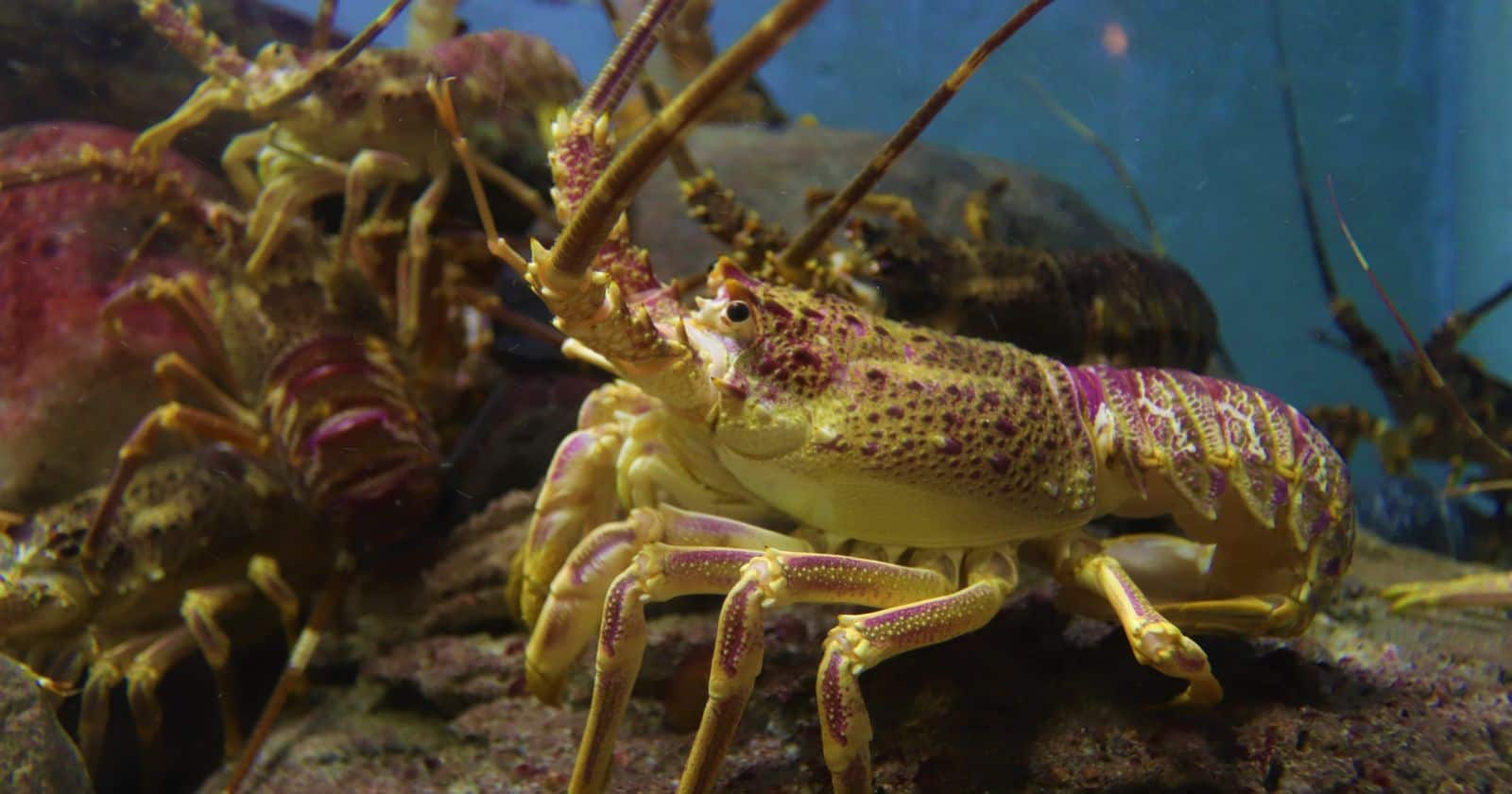Are you curious about how lobsters extract oxygen and their ability to breathe in water? Perhaps you’re eager to understand the survival limitations lobsters face when removed from their natural habitat.
Read on as we unveil the mysteries surrounding these enchanting crustaceans and shed light on their gill-driven respiration.
In this article, we will delve into the intricacies of lobster respiration and shed light on how their gills play a pivotal role in their ability to extract oxygen.
Learn about the structure and function of the gills, as we uncover fascinating details about their twenty pairs of feathery-like filaments that filter oxygen from the water.
The Importance of Lobster Gills: Unveiling the Incredible Oxygen Extraction Abilities
Lobsters, like other aquatic animals, rely on their gills to extract oxygen from the water. These fascinating creatures possess five pairs of gills, with each pair attached to one of their ten legs, including their claws.
Here are some important facts about lobster gills and their incredible oxygen extraction abilities:
- Dual Oxygen Extraction Abilities: Lobster gills are specially designed to function in both seawater and air. These gills can remove oxygen from seawater as well as from the air, as long as they remain cool and moist. This ability allows lobsters to survive in various environments and adapt to changing conditions.
- Oxygen Provider and Regulator: The primary function of lobster gills is to provide oxygen, but they also play a crucial role in regulating the lobster’s internal environment. The gills are responsible for removing oxygen from the surrounding water and distributing it to different parts of the lobster’s body. This ensures that all the necessary organs and tissues receive the oxygen they need to function properly.
- Cooling and Moisturizing: Lobsters must keep their gills cool and moist for effective oxygen extraction. Without proper moistening and cooling, lobsters can suffocate. It is vital to transport lobsters in containers with no standing water, as they may not be able to obtain sufficient oxygen in such conditions. To prevent this, lobsters are often transported in damp towels, allowing their gills to remain moist and functional.
The Anatomy of Lobster Gills: A Closer Look at Their Feathery Structures
Lobsters have twenty pairs of gills, each composed of numerous feathery-like filaments surrounding a central rod. These gills are located within the gill chamber of the carapace, providing protection for this essential respiratory organ. The feathery structures of the gills play a crucial role in extracting oxygen from both water and air.
Water plays a vital role in supplying oxygen to the lobster’s gills. As water passes up through openings between the lobster’s legs, it flows over the gills and up towards the head. The feathery filaments of the gills serve as a medium for gas exchange, allowing oxygen from the water to enter the lobster’s bloodstream while carbon dioxide is expelled.
The gills are segmented clumps of tissue found on each side of the lobster above its walking legs. When dried, they may appear clumped together, but their functional structures are well-preserved. These feathery and delicate filaments maximize the surface area available for gas exchange, ensuring efficient oxygen uptake.
It’s worth noting that lobsters cannot breathe air directly. Instead, they rely on extracting oxygen from the water surrounding their gills. For this reason, it’s essential for the gills to remain cool and moist to effectively perform their respiratory function.
The Mechanism of Breathing: How Lobsters Extract Oxygen from Water
Lobsters are fascinating creatures that have adapted to extract oxygen from water through their unique respiratory system. They possess gills, which are responsible for removing oxygen from both seawater and air as long as they remain cool and moist. Let’s dive deeper into the mechanism of breathing in lobsters.
Lobsters have five pairs of gills, with each attached to one of their 10 legs, including the claws. These gills play a crucial role in extracting oxygen from the surrounding water. The percentage of oxygen extracted by the gills increases as the oxygen concentration of the medium decreases. This means that lobsters can efficiently extract oxygen even in environments with lower oxygen levels.
While lobster gills work best in seawater, they have the remarkable ability to extract oxygen from the air as well. Their gills are designed to function in both seawater and air, making it possible for lobsters to breathe in various environments. In fact, lobsters can even absorb oxygen through their skin, which is why they are often transported in damp towels to ensure they remain moist.
To extract oxygen from the air, lobsters must keep their gills cool and moist. They can suffocate if they are kept in containers of seawater with no aeration, as the lack of oxygen in the water hinders their ability to breathe. Therefore, it is imperative to transport lobsters in containers with no standing water, providing them with a moist environment for breathing.
Gills and Survival: How Lobsters Adapt Out of Water
Lobsters are fascinating creatures that have adapted to survive in their natural environment through their extraordinary gills. These blood-filled, feathery organs are their lifeline, allowing them to extract oxygen from the water they live in.
With twenty pairs of gills, lobsters have a remarkable respiratory system. These gills consist of numerous feathery-like filaments arranged around a central rod, which are protected within the gill chamber of the carapace. Situated at the base of the lobster’s legs, these gills play a crucial role in oxygen extraction.
While humans rely on our respiratory system to circulate air for breathing, lobsters depend on their gills to circulate water. These gills enable them to extract oxygen from the water, ensuring their survival. However, unlike humans, lobsters cannot directly breathe air.
Lobsters can absorb oxygen from the air, but only if their gills remain moist. This is why they require water on their gills to extract oxygen effectively. If their gills become too dry, they are unable to extract oxygen efficiently, leading to suffocation and ultimately death.
It’s worth noting that lobsters have a limited tolerance for being out of water. They can only survive for approximately one to two days when deprived of their natural aquatic environment. Therefore, their ability to adapt out of water is limited and constrained by their need for large amounts of oxygen.
Maintaining Optimal Conditions: The Essential Factors for Gills to Absorb Oxygen
Gills are vital for fish as they perform various crucial functions such as respiration, osmoregulation, excretion of nitrogenous waste, and pH regulation. In order for gills to effectively absorb oxygen, several essential factors need to be maintained.
Dissolved Oxygen:
- Aquatic organisms, including fish, rely on dissolved oxygen in water for survival.
- Different species have varying oxygen requirements, with some needing high levels of oxygen while others can tolerate lower levels.
- Fish obtain oxygen either by actively moving water across their gills or by passively relying on water currents.
- Maintaining adequate dissolved oxygen levels ensures the survival and well-being of aquatic fauna.
Water Quality:
- The concentration of dissolved oxygen in a body of water is a crucial indicator of its quality.
- Accurate measurement of dissolved oxygen helps monitor changes in water resources, caused by natural factors or human activities.
- Ensuring good water quality is essential for the optimal functioning of gills and overall aquatic ecosystem health.
Osmoregulation:
- Marine fish face an osmo-respiratory compromise, where they balance efficient gas exchange with water and ion regulation.
- Gill perfusion allows for efficient diffusion of gases like oxygen and carbon dioxide across the gills, but it also leads to water and ion gain for saltwater fish.
- Maintaining an optimal balance between respiration and osmoregulation is crucial for marine fish’s survival and well-being.
Hypoxic Conditions:
- Gill respiration offers an advantage over cutaneous respiration in extracting oxygen, especially under hypoxic conditions.
- When dissolved oxygen levels in the water become low, gills play a vital role in extracting the available oxygen efficiently.
- This ability allows fish to survive in water with lower oxygen content and adapt to changing environmental conditions.
The Connection between Gills and Legs: Unraveling the Intricate Associations
The gills and legs of lobsters are intricately associated, with the gills located on the base of each leg and responsible for extracting oxygen from seawater and air.
Here’s a closer look at the connection between lobsters’ gills and legs:
Gills as Oxygen Extractors:
- Lobsters have twenty pairs of gills, which are feathery-like filaments protected in the gill chamber.
- The gills remove oxygen from the water as it passes over them.
- Through a network of small blood vessels called capillaries, the gills pick up oxygen dissolved in the water.
- Oxygen extracted from seawater and air by the gills is essential for lobsters to survive.
Role of Legs in Oxygen Exchange:
- Lobster gills are located at the base of each leg.
- Water passes through openings between the lobster’s legs and over the gills.
- The legs play a crucial role in facilitating the flow of water over the gills and the exchange of oxygen.
Oxygen Absorption through the Skin:
- Lobsters can also absorb oxygen through their skin.
- To enable this, their gills must remain cool and moist.
- When transporting lobsters, it is important to keep them in damp towels to maintain the required level of moisture.
The Remarkable Adaptation: Lobsters’ Ability to Survive Underwater
Lobsters are fascinating creatures that have evolved remarkable adaptations to survive underwater. Let’s explore how they do it.
Lobsters require oxygen to live, just like us humans. However, they obtain this vital element from the seawater they inhabit. Their gills play a crucial role in breathing underwater. These blood-filled, feathery organs extract oxygen from the water, allowing the lobsters to breathe and thrive.
Lobsters possess an impressive twenty pairs of gills. These gills are composed of numerous feathery-like filaments arranged around a central rod. They are located at the base of the lobster’s legs and are protected within the gill chamber of the carapace. This unique structure enables efficient oxygen extraction from the surrounding water.
It’s important to note that lobsters cannot survive outside of water for long periods. They require large amounts of moisture to function properly. Unlike humans who can breathe air directly, lobsters need water on their gills to extract oxygen. Without this moisture, their gills would dry out, resulting in suffocation and death.
In certain situations, lobsters can absorb oxygen from the air, but only if their gills remain moist. The water on their gills allows them to extract oxygen from the surrounding air. However, if their gills become too dry, they will be unable to breathe and ultimately perish.





